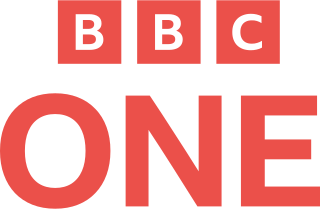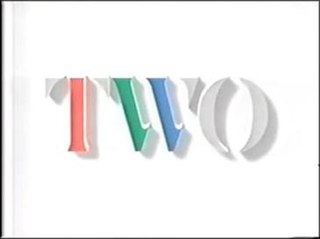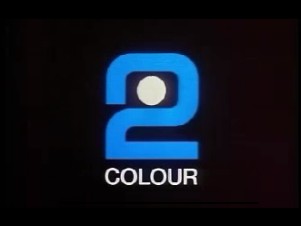| Country | UK |
|---|---|
| Broadcast area | Worldwide |
| Network | BBC |
| Headquarters | BBC Television Centre |
| Programming | |
| Picture format | 576i (4:3 SDTV) |
| Ownership | |
| Owner | BBC |
| History | |
| Launched | 11 March 1991 [1] |
| Replaced | BBC TV Europe |
| Closed | 26 January 1995 |
| Replaced by | BBC World BBC Prime |
BBC World Service Television, often abbreviated to WSTV (World Service Television), was the name of two BBC international satellite television channels between 1991 and 1995. It was the BBC's first foray into worldwide television broadcasting. In Europe, it was the successor to BBC TV Europe, which it replaced on 11 March 1991. [1] The service was also launched in Asia as a 24-hour news and information service with minor differences, a precursor to BBC World News, launched on 14 October 1991. [2]
Unlike the BBC World Service at the time, it was not funded by the British government through a grant-in-aid. [3] Instead, it was funded either by subscription or by commercial advertising, with advertisements inserted locally by individual cable or satellite providers. News headlines, trailers and other updates, known as "break fillers", were inserted to fill gaps in cases where no commercials were broadcast by the local provider.
In Europe, BBC WSTV replaced BBC TV Europe on 11 March 1991 as the BBC's subscription-funded entertainment service. [2] Like BBC TV Europe, it was a mix of BBC1 and BBC2. However, in place of BBC TV Europe's near-continuous direct rebroadcast of BBC1 and schedule pattern timed to UK time (GMT/BST), it had a schedule pattern more synchronised to Central European Time and many of its first-run programmes were timeshifted to more suitable times for viewing in CET, as well as showing specially commissioned World Service News bulletins from Television Centre. [4] The BBC World Service News studio looked like the BBC's domestic news, though with different graphics and an on-screen logo. The station also broadcast its own Children's BBC junctions from Presentation Studio A.
Outside Europe, BBC World Service Television was the name of the 24-hour news, information and current affairs service, launched in Asia on 14 October 1991 as carried by Star TV, and also available from Turkey to South Korea on AsiaSat. [2] Competing against CNN International, it showed current affairs and documentary programming from BBC One and BBC Two in addition to BBC World Service News with entertainment programs aired on Star Plus. Explaining why the company choose to carry BBC WSTV instead of CNN, Richard Li, who was head of Star TV at the time, cited American bias projected in CNN's coverage of the Gulf War, in an interview with The New York Times . [5]
News Corporation, of Rupert Murdoch, began acquiring Star TV in 1993. In March 1994, the BBC and Star TV reached a deal after an out of court settlement, that would gradually drop BBC World Service Television from the satellite broadcaster's offerings. BBC WSTV would be dropped from the channel line-up for the Northeast Asia by mid-April that year, but would be available in the rest of Asia until 31 March 1996. [6] [7] [8]
BBC World Service Television programming was also carried in Africa on M-Net, launched on 15 April 1992, for 11 hours a day. [9] In Canada, its bulletins were carried on CBC Newsworld several times a day. [10]
The channel from 1991 until c.1994 used the presentation device of a rotating world: the Computer Originated World, which had previously been used on BBC One between 1985 and 1991. The world symbol remained the same, but the legend at the bottom was altered to a BBC logo with an italic "World Service" beneath. Promotional style and static programme captions mirrored that of BBC1 and 2 at the time and featured the globe symbol above a small BBC logo in the top left corner of promotions and on captions. The sidebar of captions featured a vague wispy line style, similar to that used by WSTV bulletins. [11] The channel also used a break bumper featuring the globe, and a promo bumper featuring the COW globe split into lines to the side and bottom. [12]
Around the time of the relaunch, BBC WSTV adopted a variation of the flag look later to be used by BBC World, which only featured a BBC logo. [13] [14]
The channel had a permanent DOG of the BBC logo in the top right corner of the screen. [13]
On Thursday, 26 January 1995 at 19:00 or 7pm GMT, BBC World Service Television was split into two new television services broadcast from BBC Television Centre in White City, London:

BBC One is a British free-to-air public broadcast television channel owned and operated by the BBC. It is the corporation's oldest and flagship channel, and is known for broadcasting mainstream programming, which includes BBC News television bulletins, primetime drama and entertainment, and live BBC Sport events.

ITV Central, previously known as Central Independent Television, Carlton Central, ITV1 for Central England and commonly referred to as simply Central, is the Independent Television franchisee for the Midlands. It was created following the restructuring of ATV and began broadcasting on 1 January 1982. The service is owned and operated by ITV plc under the licensee of ITV Broadcasting Limited. Historically Central made a major contribution to the ITV network schedule - especially in entertainment and drama - but today its main responsibility is the regional news service.
BBC Prime was the BBC's general entertainment TV channel in Europe, Middle East, Africa, South Asia and Asia Pacific from 30 January 1995 until 11 November 2009, when it was replaced by BBC Entertainment.
This is a timeline of the history of the British Broadcasting Corporation.

The BBC One Balloon idents were a series of idents used on the British TV channel BBC One from 4 October 1997 to 28 March 2002. The balloon theme replaced the computer-generated spinning globe that had been used as the main ident on the channel since 1991, and marked a radical departure from the traditional spinning globe which had been the channel's primary identity since 1963. It launched on the same day as a BBC-wide rebrand, and thus the new idents also carried the new BBC logo. The channel's name also changed from BBC1 to BBC One. This was the last ident set used by the channel when it fully closed down; the last proper closedown took place in the evening hours of 8 November 1997. Starting the following evening, BBC News 24 would broadcast on BBC One during closedown, which continues today.

Noddy was a camera system used for generating idents for the BBC One and BBC Two television channels from late 1963 to February 1985.
The BBC is forbidden under its charter to directly undertake any commercial operations on-air within the United Kingdom; however, no such restriction applies to operations in other countries. Therefore, the BBC exploits its massive television archive by operating a number of commercial television channels outside the UK through its BBC Studios subsidiary.
The history of BBC television idents begins in the early 1950s when the BBC first displayed a logo between programmes to identify its service. As new technology has become available, these devices have evolved from simple still black and white images to the sophisticated full colour short films seen today. With the arrival of digital services in the United Kingdom, and with them many more new channels, branding is perceived by broadcasters to be much more important, meaning that idents need to stand out from the competition.

The Computer Originated World (COW) was the method of creating the BBC1 symbol that was used between 18 February 1985 and 16 February 1991. It was later used by the international, commercial television service BBC World Service Television from its launch until 26 January 1995.

The "Virtual Globe" was the method of creating the BBC1 symbol that was used between 16 February 1991 and 4 October 1997.

BBC Select was an overnight television service run by the BBC during the hours when BBC1 or BBC2 had closed down, usually between 2am and 6am. The channel showed programming intended for specialist audiences, such as businessmen, lawyers, nurses and teachers, and was designed to be viewed after broadcast via a video recording. It was funded by a subscription, and most programming was scrambled.

ITV Wales and West, previously known as Harlech Television (HTV), was an ITV franchise area in the United Kingdom until 31 December 2013, licensed to a broadcaster by the regulator Ofcom.
The logo of the BBC has been a brand identity for the corporation and its work since the 1950s in a variety of designs. Until the introduction of a logo in 1958, the corporation had relied on its coat of arms for official documentation and correspondence, although this crest rarely appeared onscreen. With the increased role of television for the BBC in the 1960s, particularly after the foundation of ITV, the corporation used its logo to increase viewer familiarity and to standardise its image and content. The logo has since been redesigned a number of times, most recently in 2021 with the BBC blocks, a logo designed to work across media. From 1958, there have been six different BBC logos. The first logo of the network was used from 1958 to 1963, the second from 1963 to 1971, the third from 1971 to 1992, the fourth from 1988 to 1997, the fifth from 1997 to 2021, while the sixth and current logo was adopted in October 2021.

The BBC Two "Two" ident was the station identification used on BBC2 between 30 March 1986 and 16 February 1991. It was the last non-corporate look for the channel, and the only look until 2018 that did not feature a numeral '2' in the design.
BBC Schools, also known as BBC for Schools and Colleges or BBC Education, is the educational programming strand set up by the BBC in 1957, broadcasting a range of educational programmes for children aged 5–16. From launch until June 1983, programming was based on BBC1 during the daytime, apart from coverage of major news events which saw the programmes shifted to BBC2. In September 1983, programming was transferred permanently to BBC2 freeing BBC1 to develop its own daytime schedule. The strand, named Daytime on Two, remained on BBC Two until March 2010, later supplemented by the 'Class TV' strand on CBBC.
BBC One used a number of different idents from the time of the station launch on 2 November 1936 until the station took on the Mirror Globe Idents on 15 November 1969.

The Cube 2 was an ident used by BBC Two between 2 December 1967 and 28 December 1974. It featured a stylised "2" that rotated on screen.

The launch ident was a television station identification used by BBC Two between their launch night in 1964 and the introduction of colour in 1967.
This is a timeline of the history of the British broadcaster Thames Television and its predecessor Associated-Rediffusion. Between them, they provided the ITV weekday service for London from 1955 to 1992, after which Thames continued as an independent production company until 2003.
This is a timeline of the broadcasting of schools programmes on television in the UK.